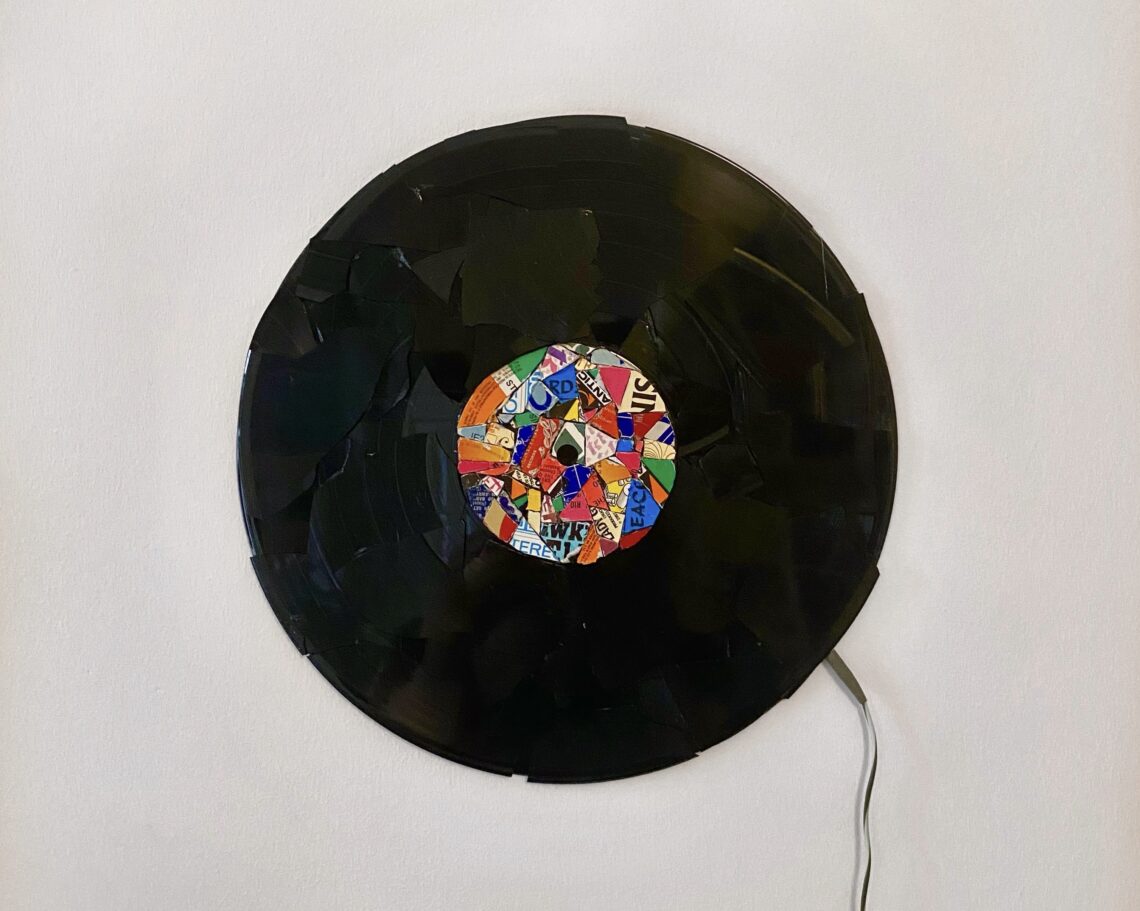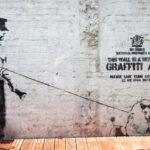Reconstructing the Vinyl
In continuing to deconstruct the vinyl, it was becoming clear to me that the vinyl was a vivid visual representation of what listening to music used to be like in the analogue world. The development of digital forms of music has disrupted the experience of music not just in the way we hear the sound, but the way we listen, manipulate it, pay for it or not pay for it, share it, record it and comment on it. The entire process and experience of music listening has changed.
In my search for vinyl records I discovered a world that I had not previously been unaware of. Independent record stores still exist, although not in abundance and vinyl’s are lovingly sold and traded, however they are relatively rare and an underground subculture has emerged of vinyl lovers who don’t reduce the vinyl to a simple commodity and often reject this brave new digital world. Here the albums are instead treasured, the sequence of the songs is part of the artistry, the album cover art themselves, the poetry of the lyrics are admired and the rich sound, including imperfect scratches, is coveted.
I started my next experiment by smashing some vinyl LPs with a hammer and tearing pieces apart with pliers. This act of destruction left me with a pile of pieces, each fragment a different shape and size. To me this suddenly represented what digital had done to music. These different sized fragments were representing a collection of random artists, songs, samples songs and genres that people will dip in and out of when making a digitalized playlist.
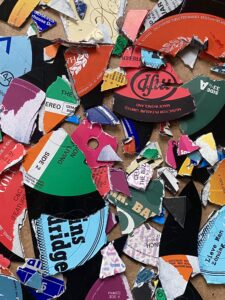
I originally thought about deconstructing and reforming just the centre record label section from broken coloured pieces of different records and keeping the black grooved section undamaged. However, after breaking up the vinyl and seeing it shattered into pieces, I realised I had to reform the entire record as this felt more complete and would better represent the way the music industry is experienced by society today. I created a new centre label of the vinyl record, made up of a mosaic of multiple broken labels together to form a patchwork of completely different albums.
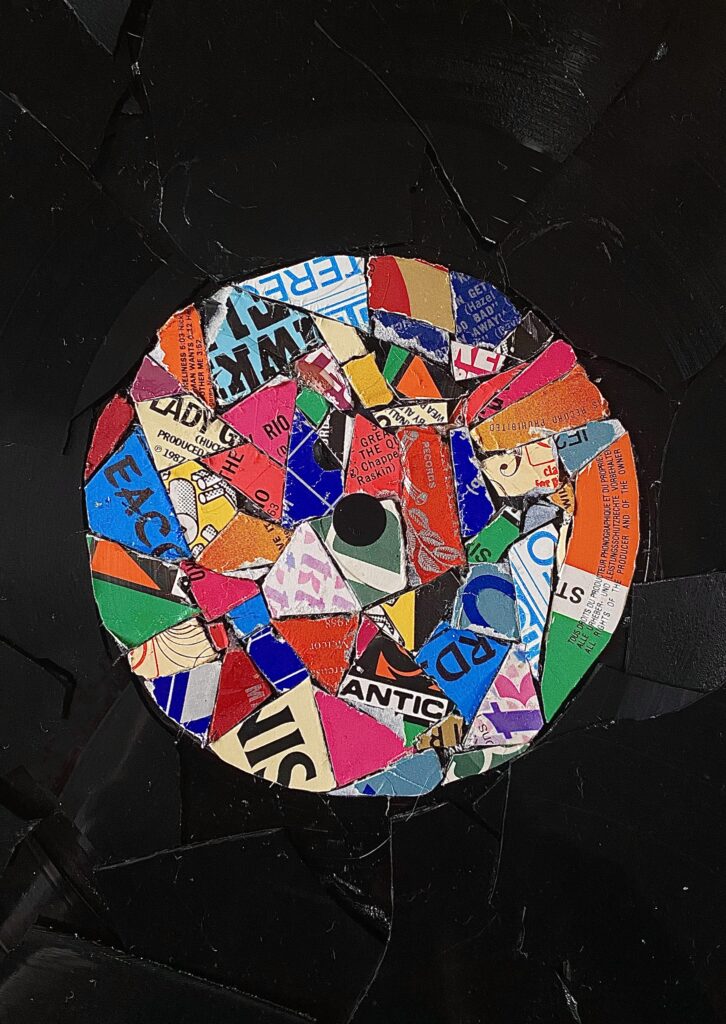
I then reformed the grooved section by layering different sized pieces of vinyl randomly, some on top of others. Not one piece was connected correctly to another, the songs were broken up not just from the order they were presented to us by the artist on the LP but also the songs themselves were fragmented just like the samples we now listen to as we flick through tracks on our phones.
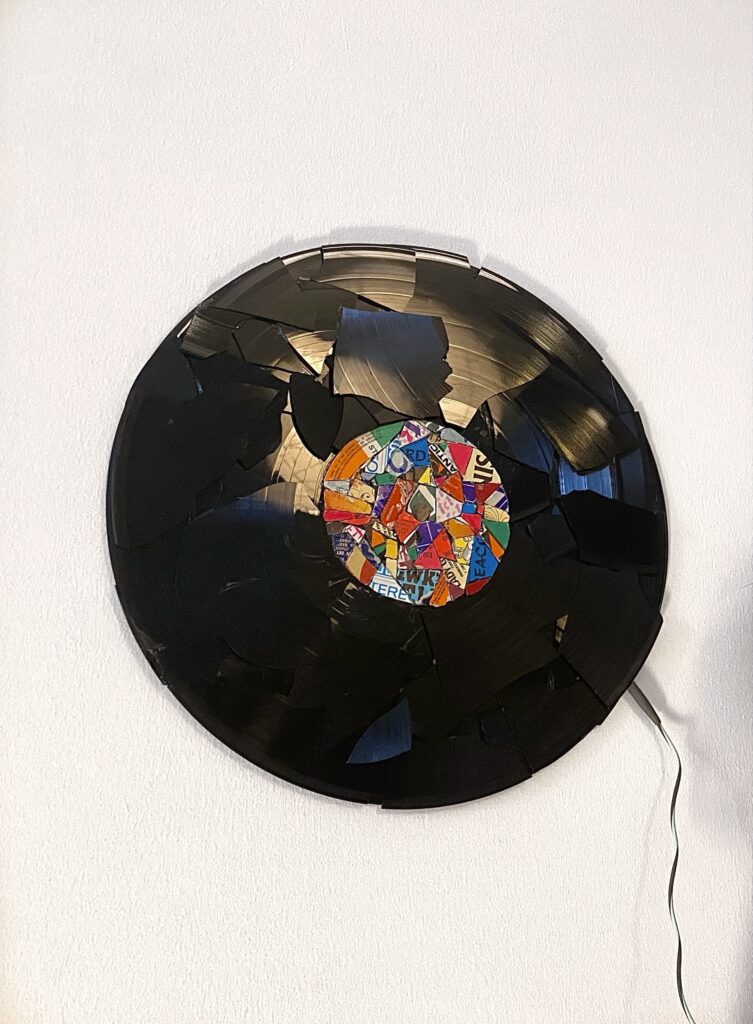
By creating this reconstructed vinyl, I am attempting to represent the way that digital music streaming platforms encourage us to experience music, hundreds of songs from different artists and genres at our fingertips, which we can sample or have suggested to us by algorithms, without potentially knowing anything about the artist’s music, which then can be assembled together into a uniquely jumbled personalised playlist.
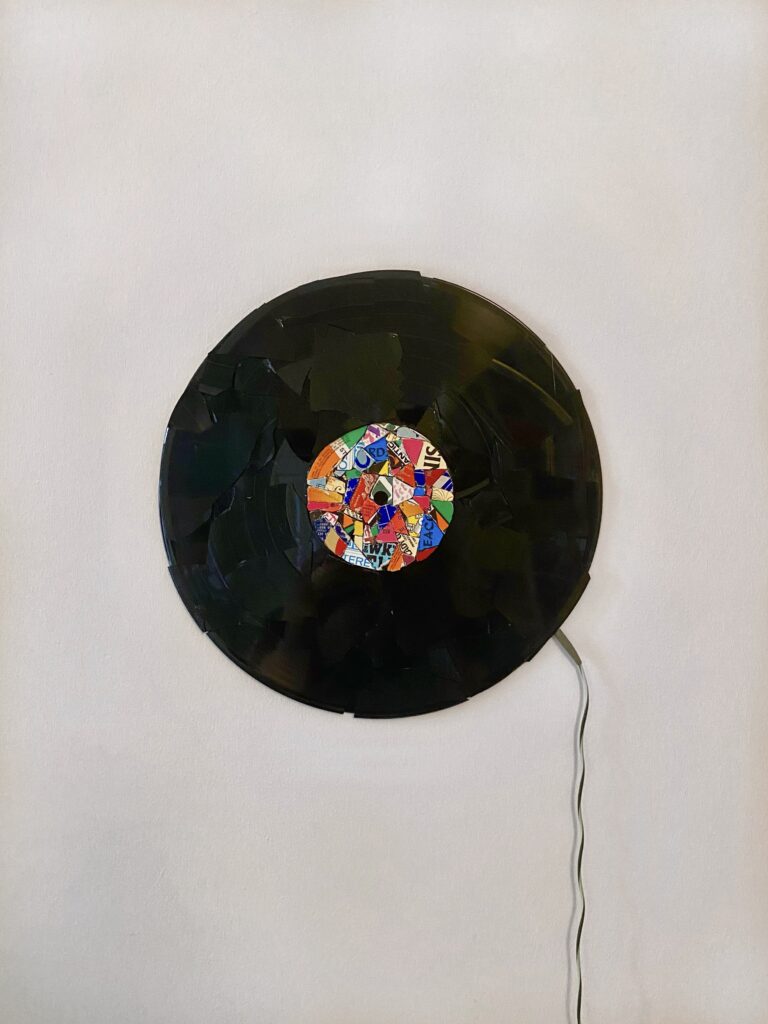
What I wanted to try and portray through my reconstruction was how songs become detached from their creators, listened to alongside random others, devoid of meaning or a context that the artist intended. The total commodification of music has now arrived, we don’t even pay the artist anymore for their craft, we pay a subscription fee for a music service. I came away from this moved, mourning the loss of something that I had never even experienced.
